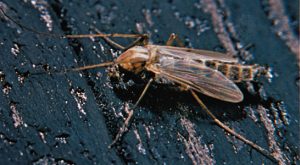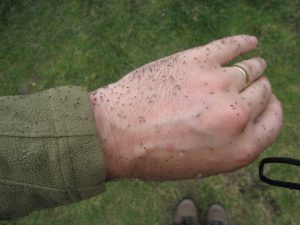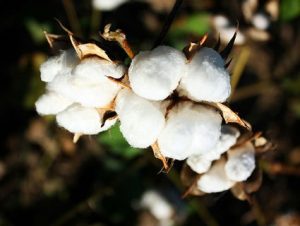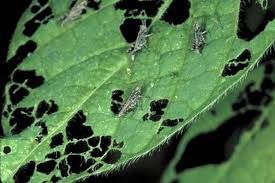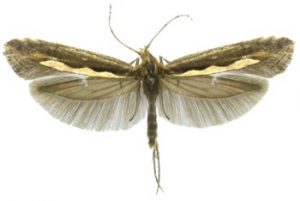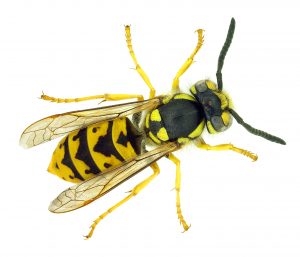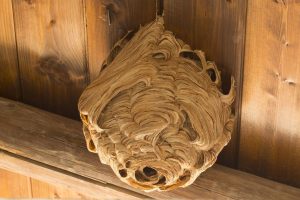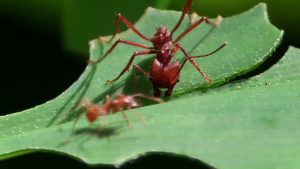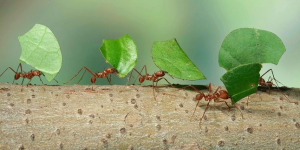You might remember hearing the tragic news when 13 kids died in Dinajpur, Bangladesh when they had consumed highly toxic chemicals endosulfan which was sprayed on litchi orchards.
….or when in Karnataka, India 34 sheep, including a few goats were found dead in Nrupathunga town, after they allegedly consumed water that contained traces of chemicals from pesticides.
Each time we hear about such tragic cases of pesticide poisoning, the obvious question is, “how can we prevent this from happening again?”
Pesticides are chemical substances that are meant to kill pests. In general, a pesticide is a chemical or a biological agent such as a virus, bacterium, antimicrobial, or disinfectant that deters, incapacitates, kills, pests.
This use of pesticides is so common that the term pesticide is often treated as synonymous with plant protection product. It is commonly used to eliminate or control a variety of agricultural pests that can damage crops and livestock and reduce farm productivity.
The most common of these are herbicides which account for approximately 80% of all pesticide use.
Most pesticides are intended to serve as plant protection products (also known as crop protection products), which in general, protect plants from weeds, fungi, or insects.
Target pests can include insects, plant pathogens, weeds, molluscs, birds, mammals, fish, nematodes(roundworms), and microbes that destroy property, cause nuisance, or spread disease, or are disease vectors.
Pesticides are highly toxic to humans and other species. According to the Stockholm Convention on Persistent Organic Pollutants, 9 of the 12 most dangerous and persistent organic chemicals are organochlorine pesticides.
The toxic chemicals in these are designed to deliberately released into the environment. Though each pesticide is meant to kill a certain pest, a very large percentage of pesticides reach a destination other than their target. Instead, they enter the air, water, sediments, and even end up in our food.
Pesticides have been linked with human health hazards, from short-term impacts such as headaches and nausea to chronic impacts like cancer, reproductive harm.
The use of these also decreases the general biodiversity in the soil. If there are no chemicals in the soil there is a higher soil quality, and this allows for higher water retention, which is necessary for plants to grow.
Let us look at the below news article that was published by Mr. Brett on futurity.org
The common pesticide may cause lung problems in kids.
August 16th, 2017
The most heavily used pesticide in California, elemental sulfur, may harm the respiratory health of children who live near farms that use it, new research suggests.
In a study of children in the Salinas Valley’s agricultural community, researchers found significant associations between elemental sulfur use and poorer respiratory health.
The study, which appears in the journal Environmental Health Perspectives, linked reduced lung function, more asthma-related symptoms, and higher asthma medication use in children living about a half-mile or less from recent elemental sulfur applications compared to unexposed children.
The Environmental Protection Agency generally considers elemental sulfur as safe for the environment and human health, but previous studies have shown that it is a respiratory irritant to exposed farmworkers.
Elemental sulfur’s effect on residential populations, especially children, living near treated fields has not previously been studied despite the chemical’s widespread use and potential to drift from the fields where it is applied. This study links the agricultural use of sulfur with poorer respiratory health in children living nearby.
Elemental sulfur is allowed for use on conventional and organic crops to control fungus and other pests and is very important to both systems. It is the most heavily used agricultural pesticide in California and Europe. In California alone, more than 21 million kilograms of elemental sulfur were applied in agriculture in 2013.
“Sulfur is widely used because it is effective and low in toxicity to people. It is naturally present in our food and soil and is part of normal human biochemistry, but breathing in sulfur dust can irritate airways and cause coughing,” says co-author Asa Bradman, associate director of the Center for Environmental Research and Children’s Health at the University of California, Berkeley’s School of Public Health.
For the study, the research team examined associations between lung function and asthma-related respiratory symptoms in hundreds of children living near fields where sulfur had been applied.
The study found several associations between poorer respiratory health and nearby elemental sulfur use. A 10-fold increase in the estimated amount of sulfur used within 1 kilometer of a child’s residence during the year prior to pulmonary evaluation was associated with 3.5-fold increased odd in asthma medication usage and two-fold increased odds in respiratory symptoms such as wheezing and shortness of breath.
The study also found that each 10-fold increase in the amount of elemental sulfur applied in the previous 12 months within a 1-kilometer radius of the home was associated with an average decrease of 143 milliliters per second (mL/s) in the maximal amount of air that the 7-year-old children could forcefully exhale in one second.
“This study provides the first data consistent with anecdotal reports of farmworkers and shows that residents, in this case, children, living near fields may be more likely to have respiratory problems from nearby agricultural sulfur applications,” says senior author Brenda Eskenazi, a professor at the School of Public Health.
Given elemental sulfur’s widespread use worldwide, the study authors call urgently for more research to confirm these findings and possible changes in regulations and application methods to limit impacts of sulfur use on respiratory health.
We need to move toward a more sustaining and low toxic method by which we can protect our environment and protect the human civilization.
The solution to above is been given by C Tech Corporation. Its product Combirepel™ is extremely low concern extremely low toxic, non-carcinogenic and non-mutagenic compounds and non-hazardous insect/termite aversive.
It combines the best of chemistry and green practices to give an environmentally safe product which keeps away effectively while at the same time guaranteeing safety to the environment, plants, animals and fragile ecosystems. It is a coming of age product which heralds an era of environmental consciousness and maintains a delicate balance while addressing problems caused by insects in myriad applications without causing any harm.
Our product works on the mechanism of repellency. It temporarily inhibits the mating cycle of the insects. The product impairs the ability of the insects to reproduce, that is the insects will not lay eggs or the laid eggs will be infertile. The product causes feeding disruption in an insect by triggering an unpleasant reaction within the insect which might try to feed on the application. The product temporarily blocks the reproduction system of the insects by hindering the release of the vital hormones for growth.
The product available in the form of masterbatch can be incorporated into the base polymer of the polymeric applications like the wires and cables, pipes, household utilities, etc. to keep the pest away from the application.
The product available in the form of liquid concentrate can be mixed in paints and be applied on the interior and exterior of the houses, schools, hospitals, warehouses, offices etc. to keep these areas safe from these pests.
The product available in the form of lacquer form can be used as a direct application. The lacquer can be applied to the already installed applications like the wires and cable, pipes, metal decors, racks and pallets from stores rooms etc.
Combirepel™ is thermally stable and does not degrade on exposure to heat and sunlight. It does not kill or harm the insect but repels them. It does not volatilize and does not degrade the soil. It is RoHS, RoHS2, ISO, REACH, APVMA, NEA compliant and FIFRA exempted.
Contact us at technical.marketing@ctechcorporation.com to keep the pests away.
Also, visit our websites:
http://www.ctechcorporation.com/
http://www.rodrepel.com/
http://www.termirepel.com/
http://www.combirepel.com/
Follow our Facebook pages at:
1] https://www.facebook.com/Combirepel-411710912249274/
2] https://www.facebook.com/Termirepel-104225413091251/
3] https://www.facebook.com/Rodrepel-120734974768048/
Follow us on our Twitter pages at:
1] https://twitter.com/rodrepel
2] https://twitter.com/termirepel
3] https://twitter.com/combirepel

